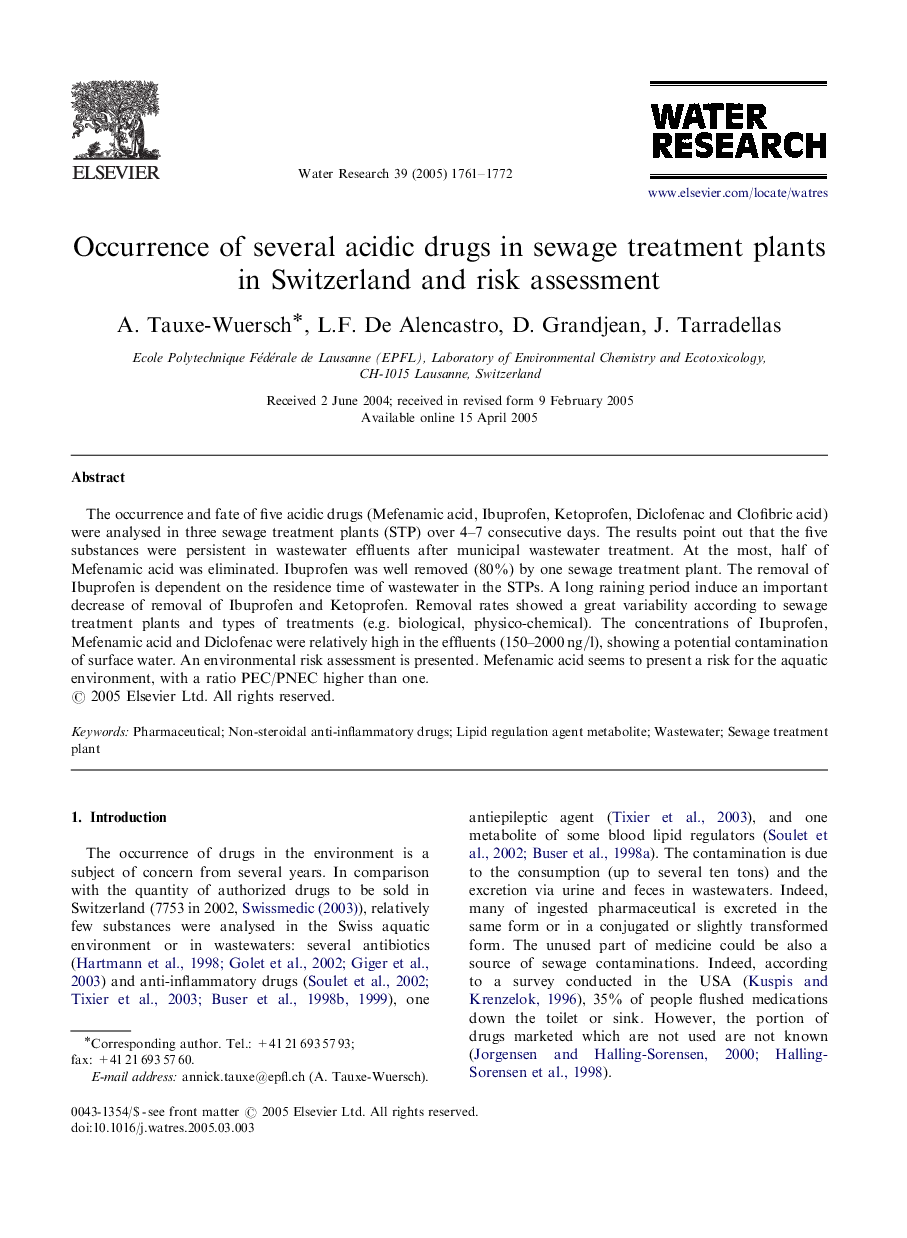| Article ID | Journal | Published Year | Pages | File Type |
|---|---|---|---|---|
| 9468063 | Water Research | 2005 | 12 Pages |
Abstract
The occurrence and fate of five acidic drugs (Mefenamic acid, Ibuprofen, Ketoprofen, Diclofenac and Clofibric acid) were analysed in three sewage treatment plants (STP) over 4-7 consecutive days. The results point out that the five substances were persistent in wastewater effluents after municipal wastewater treatment. At the most, half of Mefenamic acid was eliminated. Ibuprofen was well removed (80%) by one sewage treatment plant. The removal of Ibuprofen is dependent on the residence time of wastewater in the STPs. A long raining period induce an important decrease of removal of Ibuprofen and Ketoprofen. Removal rates showed a great variability according to sewage treatment plants and types of treatments (e.g. biological, physico-chemical). The concentrations of Ibuprofen, Mefenamic acid and Diclofenac were relatively high in the effluents (150-2000ng/l), showing a potential contamination of surface water. An environmental risk assessment is presented. Mefenamic acid seems to present a risk for the aquatic environment, with a ratio PEC/PNEC higher than one.
Related Topics
Physical Sciences and Engineering
Earth and Planetary Sciences
Earth-Surface Processes
Authors
A. Tauxe-Wuersch, L.F. De Alencastro, D. Grandjean, J. Tarradellas,
